Yarra City Council supports the installation and use of solar power.
We want to create a city powered by 100% renewable energy by 2030 and aim to double the number of Yarra households with solar by 2024.
We balance heritage considerations with environmental sustainable design through our Heritage and environmentally sustainable design guidelines.
Do I need a permit to install solar panels?
If your solar panels will be visible from the street (other than a lane) or public park, and if your property is located in a Heritage Overlay, you need a planning permit.
If your solar panels are not visible from the street you don’t need a planning permit, even if your property is located in a Heritage Overlay.
You can apply for a planning permit to install solar panels through the VicSmart application process. You do not need to pay a fee to Council for a planning application to install solar panels on your dwelling.
Is my home in a Heritage Overlay?
Visit VicPlan and Search for a planning report to create a free planning property report. The planning property report will identify the zones and overlays that apply to your site. Find more information on our Heritage overlays and grading page.
What do I need to include with my application?
Your application must include:
- a copy of your Certificate of Title with 'search statement less than 3 months old from Victorian Land Registry Services
- site plans (refer to section below)
- photos of your existing dwelling marked-up to show where the solar panels will be located (refer to section below)
- a Demolition plan when required.
You can also read our Heritage Overlay and Solar Panels factsheet (PDF 766kB) for guidance and more information.
You can contact our statutory planning team on 03 9205 5373 for pre-application advice.
You can also contact our sustainability team on 03 9205 5555 or by emailing [email protected].
1. Proposed site plan
This is a drawing that shows where you want to install solar panels on your property. This helps us understand what impact your solar panels may have to your neighbours and surrounding area.
Your plan must show the full site and include:
- the northern point of the site
- the shape and size of your property (ie. length and width) and cross-reference your measurements with your Certificate of Title
- proposed location of solar panels and building they will be installed on
- dimensions of the solar panels and distance from title boundaries
- whether the solar panels will be flush to the roof or at an angle
- context of your property's impact on neighbours. For example, show what is within 3 m of your property boundaries
- consistent scales of measurements.
You should be able to draw a site plan yourself without the assistance from a professional.
2. Proposed elevations
This is a drawing that clearly shows how your dwelling will look with the solar panels from the street and from the side.
You are likely to have more than one elevation for your dwelling:
- 'Proposed streetscape elevation' shows the front elevation of your dwelling and how the solar panels appear from the street.
- 'Side elevation' shows how the solar panels appear from the sides of your dwelling or from your neighbour's perspective.
- 'Rear elevation' shows how your solar panels appear from the back of your property.
The Proposed Elevation must include:
- the orientation of the elevation (for example 'north elevation')
- elevations for each angle the solar panels will be visible from (for example 'south elevation')
- the location and dimensions of the solar panels
- the distance of the solar panels above the natural ground level
- whether the solar panels will be flush to the roof or at an angle
- all title boundaries shown accurately with consistent scales of measurement.
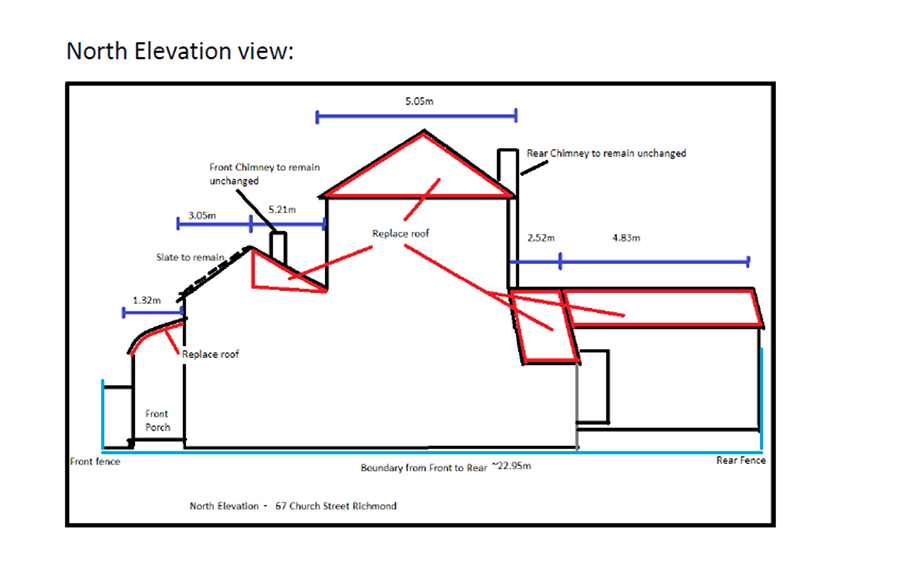
Your solar panel supplier should be able to assist you with how high on the roof the panels have to be installed, and their dimensions.
3. Photographs
Photographs help us understand the existing conditions of your property and give some context for the surrounding area.
Your photographs must:
- be current, accurate, clear, well-lit, and in jpeg format
- clearly explain what it is you are trying to show with mark-ups or annotations of where the solar panels will be
- include a view from the street with written annotations for relevant conditions (for example 'galvanised metal roof')
- include oblique or angled views of the roof where you can see the front and the side of the property in one photograph
- show all parts of your property especially if the area is not visible from the street
- avoid showing cars, animals or people for scale.
4. Materials, colours, finishes and other specifications
Providing details on the colours, materials, finishes and other specifications of your solar panels helps us understand how your panels will appear on your dwelling on in the streetscape. You can ask your solar panel supplier to give you these details. Please include dimensions and measurements of your solar panels wherever possible.
You can provide this information in either of the following ways:
- On your proposed elevation plans in the form of annotations. For example: 'black and shiny solar panels flush to the roof'.
- On a separate sheet named 'Materials Schedule'.
- A photograph of another property as an example of what you want. Please label them to avoid confusion with photographs of your property.
- Material samples, supplier product brochures, or your solar panel quote, showing the types of panels and how they will be installed.
We do not accept:
- posted or hand delivered documents or samples
- black and white documents
- photographs with no explanation of what the photo is showing
- documents with no dimensions or measurements.
What do I do once I have a planning permit?
Once your application is approved, and you have a planning permit for solar panels, you can accept your solar quote and ask your solar retailer to proceed with installation.
It is important to receive your planning permit approval before accepting your preferred solar quote.
Heritage and environmentally sustainable design guidelines
The balancing objectives of our guidelines are:
- to ensure that the location and installation of services and equipment does not detract from the significance of the heritage place or damage any heritage fabric of a dwelling
- to conceal solar panels from street view, and when this is not possible, to place and install them as sensitively as possible.
The following diagrams illustrate where best to install your solar panels.
At the rear of your dwelling or behind a roof parapet

On a section of roof concealed by a chimney, roof, parapet, fence etc.
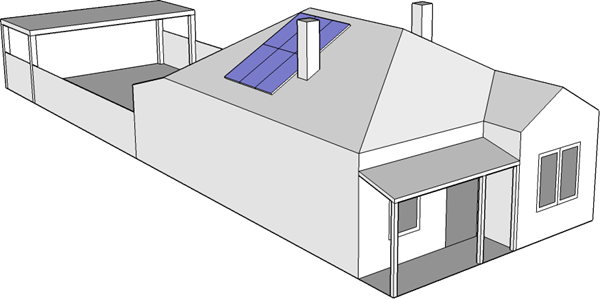
On a concealed part of the roof such as a plane or internal valley
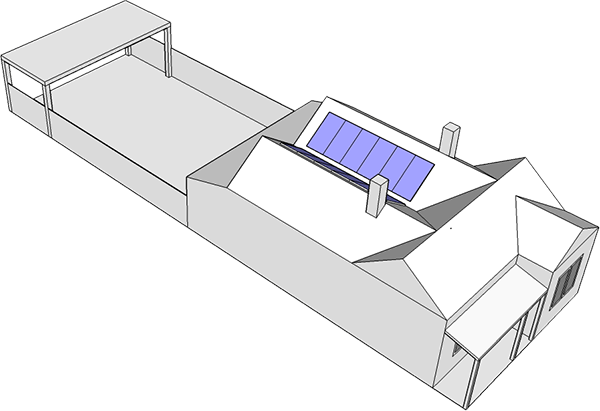
On an outbuilding such as a garage, carport, pergola, or shed
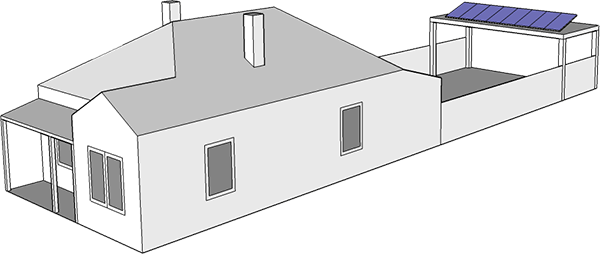
Split solar systems with the solar panels and water tank on a roof that is not the main roof of the dwelling
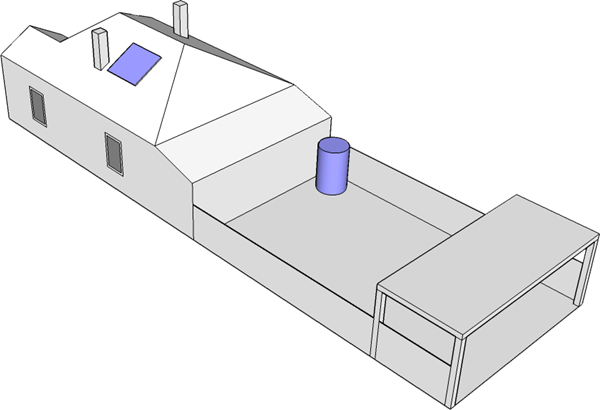
Mistakes to avoid
- Installing your solar panels in full view of the street.
- Increasing the visibility of your panels from the street by installing them on frames at odd angles with the roof or covering the entire roof.
- Installing more panels than your household needs.
- Only considering one installation position with no alternatives.
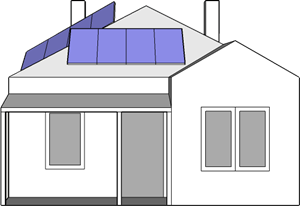
When it is not possible to conceal solar panels from street view, ask your solar retailer to provide a brief explanation of alternative options and why this is the preferred option for your property.
Orientation of solar panels on my property
Solar panels do not have to face north to achieve maximum benefits. They can sit at a variety of angles and directions and still achieve high levels of solar energy generation.
The table below shows the efficiency of solar panels at several different angles and orientations.
| Orientation | Panel angle from horizontal | ||||||
| 0° | 10° | 20° | 30° | 40° | 50° |
60° | |
| North | 86% | 93% | 98% | 100% | 100% | 98% | 93% |
| Northeast | 86% | 90% | 92% | 93% | 92% | 89% | 85% |
| East | 86% | 85% | 84% | 82% | 78% | 74% | 70% |
| Southeast | 86% | 81% | 74% | 67% | 59% | 53% | 47% |
| South | 86% | 80% | 71% | 62% | 54% | 46% | 39% |
| Southwest | 86% | 81% | 75% | 68% | 62% | 55% | 50% |
| West | 86% | 87% | 87% | 85% | 82% | 78% | 74% |
| Northwest | 86% | 92% | 95% | 97% | 97% | 95% | 90% |
More about solar panels
Learn more about solar panels and rebates on our Install Rooftop Solar page.
Watch our webinar on sustainable renovations in heritage areas:

